Heliotrope, also known as Peruvian Heliotrope or Cherry-Pie, is a beautiful flowering shrub belonging to the Boraginaceae family. Native to western South America, particularly Peru, this plant is admired for its clusters of fragrant flowers with a sweet, vanilla-like scent.
While heliotrope is an annual plant that adds charm to gardens, it is important to note that its seeds are poisonous. Though the plant’s taste is unpleasant, accidental consumption by livestock, especially horses, can lead to serious health issues if the seeds contaminate feed. Despite this caution, heliotrope remains a popular choice among gardeners for its delightful aroma and visual appeal.
| Common name | Heliotrope, Peruvian Heliotrope, Cherry-Pie |
| Botanical name | Heliotropium arborescens |
| Family | Boraginaceae |
| Species | arborescens |
| Origin | Western South America |
| Life cycle | Annual |
| Plant type | Annual |
| Hardiness zone | 10, 11 |
| Sunlight | Full Sun |
| Maintenance | Low |
| Soil condition | High Organic Matter |
| Drainage | Well-Drained |
| Spacing | 12 in. – 3 ft. |
| Flowering period | Fall |
| Height | 1.2 ft. – 1.6 ft. |
| Flower color | Lavender, Purple |
| Leaf color | Green |
| Flower benefit | Fragrant |
| Uses | Container |
I. Appearance and Characteristics
Heliotropium arborescens, the garden heliotrope or just heliotrope, is a species of flowering plant in the borage family Boraginaceae, native to Bolivia, Colombia, and Peru. Growing to 1.2 m (3.9 ft) tall and broad, it is a bushy, evergreen, short-lived shrub with dense clusters of bright purple flowers, notable for their intense, rather vanilla-like fragrance. Common names also include cherry pie and common heliotrope. Note that the common name “garden heliotrope” may also refer to valerian, which is not closely related.
It is an economically damaging invasive species in Australia.
As a perennial, it is hardy in zones 10 to 11, and requires wintering indoors in zones 9 or colder. It is hardy down to about 5 °C (41 °F). It can also be grown as a half-hardy annual (grown from seed under glass and planted out after all danger of frost has passed) in those areas. Alternatively soft-wood cuttings may be taken in summer.
During the Victorian era in England this plant gained great recognition, often appearing in gardens and the herbaceous borders of parks. They were also grown as standards. A vanilla-scented heliotrope was laid on the coffin of the American poet Emily Dickinson.
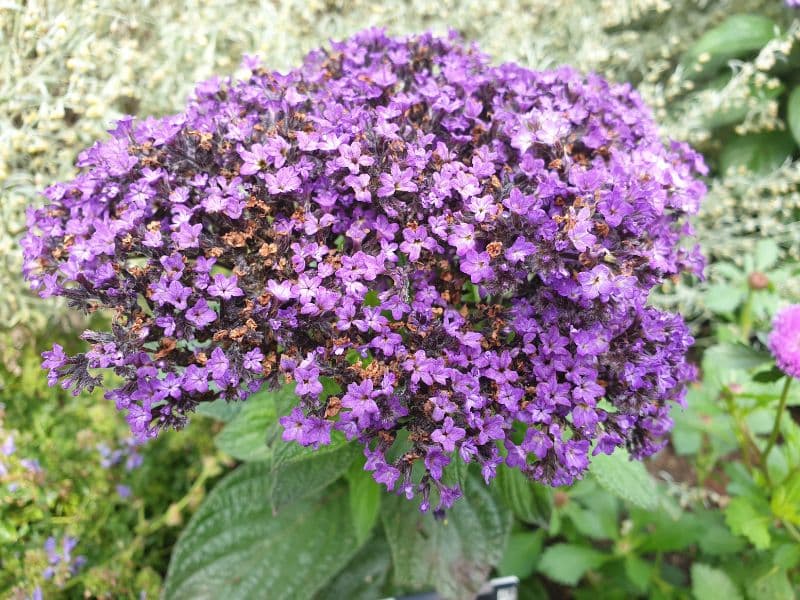
- Toxicity
The seeds are poisonous. The ASPCA’s Animal Poison Control Center article on heliotropes lists them as a substance which is toxic to horses and can induce liver failure in equines. The plant is not very palatable, but will be eaten by animals with no other forage; poisonings typically occur from ingestion of green plant material or material in hay. The toxic components can cause liver failure, referred to as “walking disease” or “sleepy staggers”.
Signs include weight loss, weakness, sleepiness, yawning, incoordination, yellowish discoloration to mucous membranes (icterus), neurologic problems secondary to liver failure (aimless walking, chewing motions, head pressing). Animals may appear to be normal at first, then become suddenly affected; the syndrome progresses rapidly over a few days to a week.
Pyrrolizidine alkaloids often cause upset stomachs and liver damage for humans who ingest any part of the plant.
The purple coloration of the flower lent itself to the so-called “heliotrope cyanosis” that was characteristic of severely ill patients in the 1918 flu pandemic.
- Weed status in Australia
In the Australian states of South Australia and Victoria, common heliotrope is the most economically damaging of all of the invasive species in Australia, and its cost to the national economy (mainly borne by farmers) over the 60 years up to 2021 is estimated to be over half a billion Australian dollars.
II. How to Grow and Care
Light And Temperature
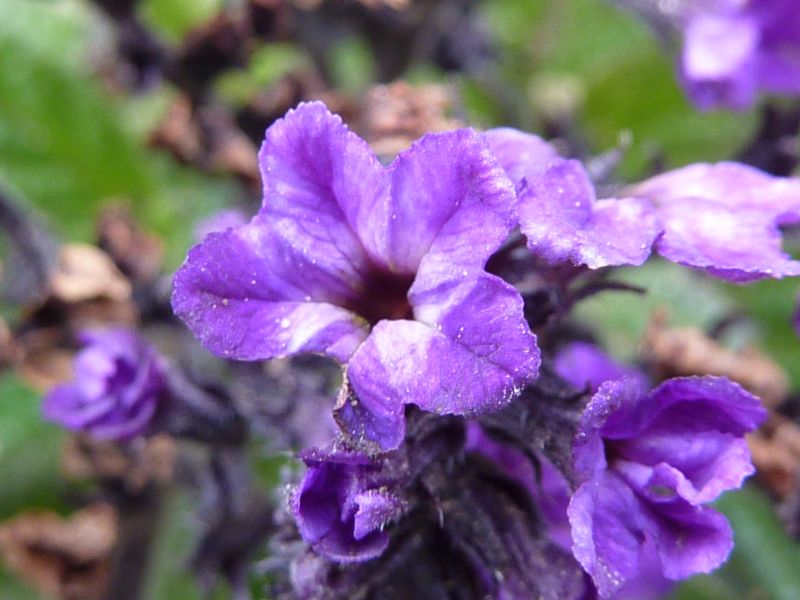
The flowers on the Cherry Pie plant move with the sun. They thrive best in a spot getting plenty of sunlight.
This will also help the flower fragrance become more pronounced.
If you grow them indoors, then a sunny spot near a south-facing window will be ideal.
The plant can also tolerate growing in partial shade.
These plants are hardy down to 41° degrees Fahrenheit.
If you live in a zone where the temperature drops below 41° degrees Fahrenheit, bring the plant indoors during the winter months.
Watering And Feeding
Cherry Pie plant needs plenty of water to grow well during its growing season.
It is not a plant you should let dry out between waterings.
Keep the soil moist at all times but not drenched during the hotter months.
In winters, you can water sparingly.
You can feed container plants while they are growing every two weeks with a liquid water soluble fertilizer.
Plants growing in the ground don’t need as much feeding and can be given fertilizer every month alone.
Soil And Transplanting
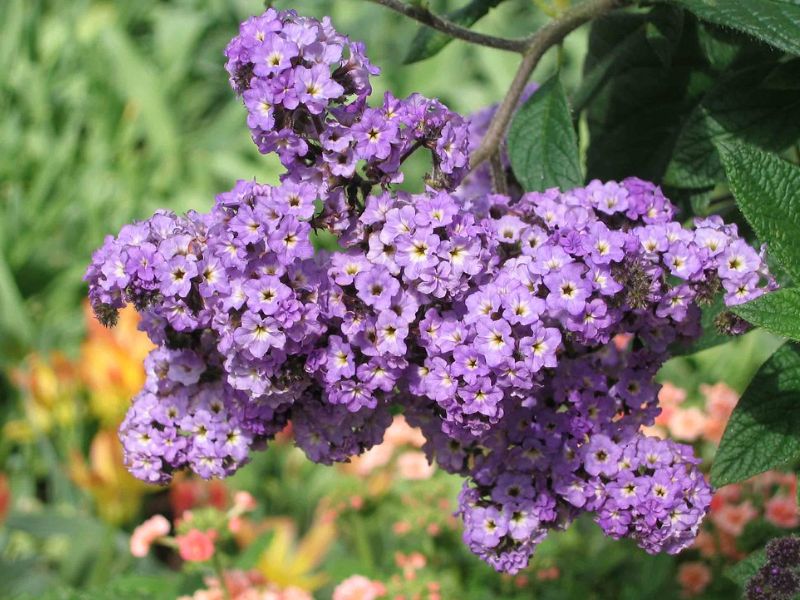
This plant does not enjoy rich soils as it leads to less attractive growth.
The plant will also become more prone to insects and diseases in rich soils.
Choose a well-draining soil that holds moisture without becoming waterlogged.
This plant enjoys soils with a pH between mildly acidic to mildly alkaline.
Grooming And Maintenance
Cherry Pie plant can be pruned back in spring to remove dead flower heads. This will help keep the plant nice and compact.
Propagation
You can propagate Cherry Pie plant from seeds.
Germination can take between a month to forty-five days.
Plant seeds right before the last spring frost.
It will allow them time to germinate, provided the temperature is maintained between 70° – 75° degrees Fahrenheit.
You can also propagate this plant through cuttings. The best time to do this will be in late summer.
Pests and Diseases
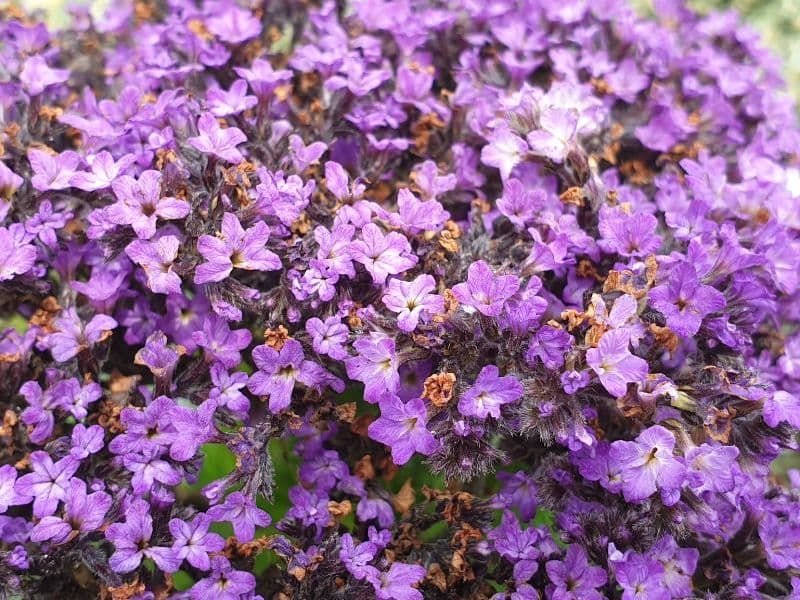
Cherry pie plants are not prone to insects or diseases.
However, they may occasionally fall prey to spider mites, especially if the plant is grown indoors.
You can control this by using a water spray or homemade insecticidal soap.
A common problem with Cherry Pieplant is leaf browning and leaf dropping.
This occurs when the plant has been left to sit in soggy soil.
It can be treated easily by giving the plant good drainage and aeration.
When consumed, Cherry Pie plant is extremely poisonous for humans and animals alike, so take care to keep children and pets away from it.
III. Uses and Benefits
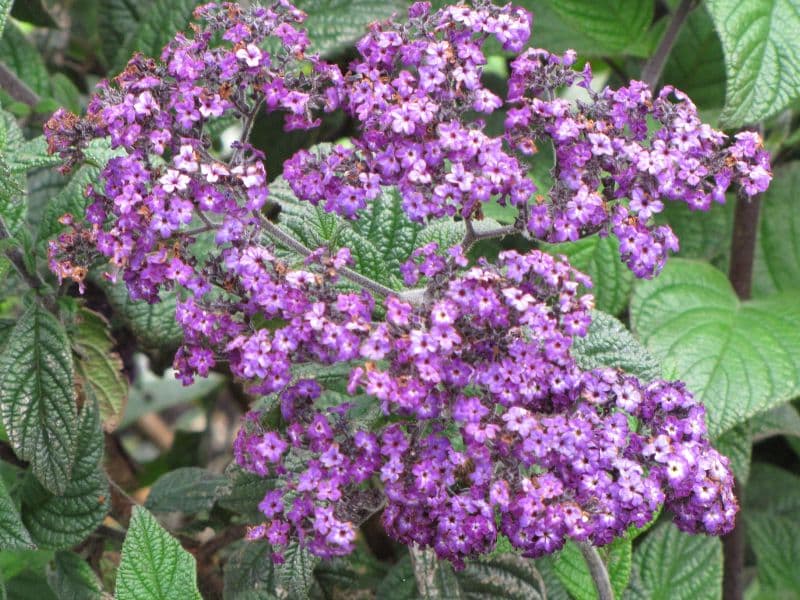
This is a beautiful and fragrant addition to your garden.
Plant them close to your windows so the fragrance can waft inside or grow them along more colorful annual plants to make your garden look cheerful all year around.
Find Where to Buy the Best Heliotrope (Heliotropium arborescens)

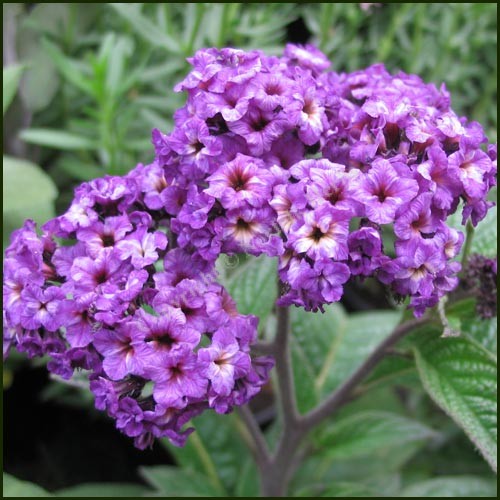



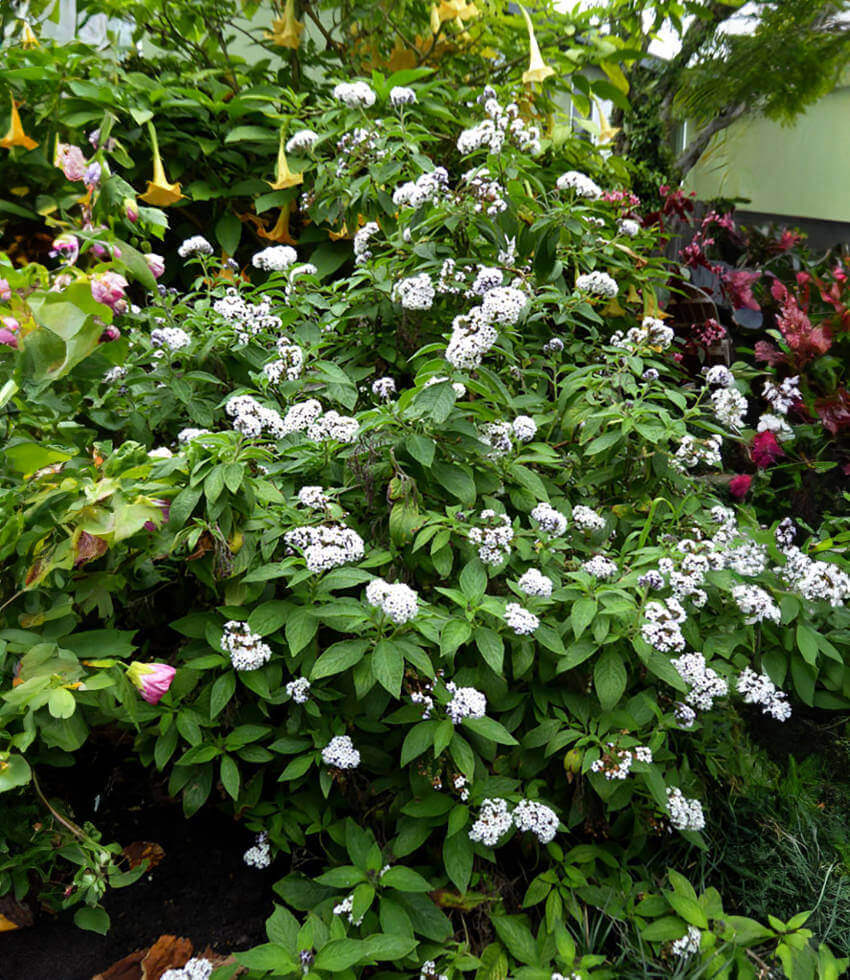












Leave a Reply